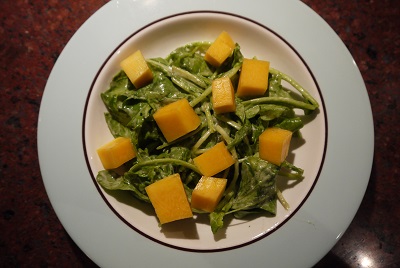I’m not sure if more people go to the Middle East in Cambridge’s Central Square for the food or the live music, but for me, the draw to the night club and restaurant was always the whipped garlic. They serve it in a miniscule bowl, smaller than a saucer, with triangles of pita, served in a small wicker basket, on the side for dipping.

I think the owners are Egyptian – they also make a terrific fool – but it took me years to learn that the zippy sauce I craved was actually Lebanese. It’s called toum and if you go into, literally, any Lebanese falafel and shwarma shop it will be an option next to the tahini sauce as they build your dish. Toum was once described to me as a “very strong kiss of garlic,” by another Lebanese restauranteur.
And even though I have spent hours of my life thinking about this sauce, it wasn’t until this winter as I stockpiled garlic from my Winter CSA that it ever occurred to me that I could skip the lines and make my very own jar of toum. I should add the reason I had so much garlic on hand is because I was sent an Israeli product, Dorot, which packages frozen cubes of garlic, ginger and a few other herbs, and has simplified my life so much. Making a soup and want some garlic? Putting together a curry and you want a ton of ginger and garlic? Toss in some frozen Dorot cubes. They are a life changer. But that means my garlic pile on the counter kept on growing and I barely touched it.
 It wasn’t until I got the February Bon Appetit that I finally made my way to the kitchen. I ended up using an amalgam of recipes, rather than the one in the magazine. The best advice I’ve read about making this sauce is to put your bottle of oil in the fridge while you prep the garlic, which takes time because you really want to remove any green stems as that will cause your dip to be bitter. Trust me, I’ve had bitter toum and it really was awful; definitely take the time to clean your garlic thoroughly. The recipes also warn that this is an emulsion, so go s-l-o-w-l-y when adding the chilled oil. It’s best done in a food processor.
It wasn’t until I got the February Bon Appetit that I finally made my way to the kitchen. I ended up using an amalgam of recipes, rather than the one in the magazine. The best advice I’ve read about making this sauce is to put your bottle of oil in the fridge while you prep the garlic, which takes time because you really want to remove any green stems as that will cause your dip to be bitter. Trust me, I’ve had bitter toum and it really was awful; definitely take the time to clean your garlic thoroughly. The recipes also warn that this is an emulsion, so go s-l-o-w-l-y when adding the chilled oil. It’s best done in a food processor.
This made a canning jam jar of the sauce, and I put it on everything while it lasted in the fridge. It’s great on roasted potatoes — and roasted sweet potatoes. I spread it on Friday night challah, dolloped it in red lentil and potato stew, and even used it as a dressing on salad greens.

Although the recipe calls for 4 cups of oil, I think mine hit the right consistency, like a thin mayonnaise, before I poured in 2 cups. They say it lasts up to 4 weeks in the fridge, but trust me when I say you’ll use it up long before then.
Toum (Lebanese Garlic Sauce)
Put your bottle of oil into the fridge as you gather the rest of your ingredients and prep the garlic
Ingredients
Up to 4 cups grapeseed, avocado or extra virgin olive oil
½ cup of peeled garlic cloves
Juice of 1 lemon, divided
½ cup of ice water, divided
Kosher salt
Directions
Before you begin, place your oil in the freezer or refrigerator so that it is chilled, but still liquid. While the oil chills, remove the ends from your garlic cloves, split them in half and remove any green layers from inside.
In the bowl of a food processor, combine garlic cloves, a hefty pinch of salt, juice of half a lemon, and 1/4 cup of the ice cold water.
Process until smooth, then stop and scrape the sides of the food processor with a spatula.
Turn the food processor back on and drizzle the chilled oil through the top as SLOWLY as possible, one cup at a time.
Scrape down the sides of the food processor as necessary. Be sure that your processor does not get too hot, as this can cause your sauce to separate.
Juice the second half of the lemon, and add the rest of the ice water.
Add oil until you’ve reached the texture you desire. The final result should resemble a thin mayonnaise. Store toum in an airtight container in the refrigerator for up to four weeks, although it will be long gone before then.
Apply to everything.























